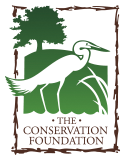As the days begin to lengthen and the air begins to warm, our minds inevitably wander to thoughts of springtime. I have distinct childhood memories of chasing skippers and white cabbage around my grandmother’s backyard, and even once in a while managing to actually catch one. Unfortunately, as time goes by, chasing butterflies has become a bit more challenging, and not only because age has slowed me down. With less natural habitat available due to development, overwhelming invasive species of plants, and the use of insecticides and pesticides, some of our more urban areas are seeing fewer varieties of species. Luckily, we can all do our part to try to alleviate this problem by planting butterfly gardens that include nectar plants for adult butterflies as well as host plants where eggs can be laid and caterpillars can thrive.
Nectar plants are essential for attracting butterflies as they provide essential nutrition for the butterfly but they are also bringing beauty, color and sweet scents to your garden. By also planting host plants you can provide the butterfly with a place to lay eggs and for the caterpillar to then feed as well. Many native plants will do both: they are the host plants for many species of butterflies and provide nectar. Together, this will almost guarantee that butterflies will continuously return to your garden.
There are approximately 150 species of butterflies native to Illinois which include some more common varieties such as the Variegated Fritillary and the Common Wood-Nymph, both of which are quite beautiful in their own right.
A species which I find very attractive is the Variegated Fritillary. Its wing has scalloped edges and wavy black lines on the upper side of its orange wings, but underneath it is tan and brown, allowing it to resemble a dead leaf. The caterpillar is reddish orange with white spots and black spines, while the chrysalis is a pearl color, sometimes with brown spots, and shiny gold spikes. Although this species is generally difficult to approach, it is worth the effort to provide a suitable habitat for. The best way to attract this butterfly is to plant both its host and nectar plants which include Passion Vines, Violets (native host plant) and Butterfly Bush, Butterfly Milkweed, Common Milkweed and Swamp Milkweed (nectar plants). Try to plant a number of these plants in groups or masses, so that they can be found from a distance, increasing your chances of attracting more butterflies. Check out this neat youtube video of the Variegated Fritillary butterfly’s life cycle:
http://www.youtube.com/watch?v=RMJJ2V5w84U
If you are unsure whether or not you want to plant an entire butterfly garden, you can always attract a variety of butterflies by placing a dish of overripe fruit such as bananas and oranges outside. It may just get you hooked.
Please add your comments about the Variegated Fritillary or share with us other ways to butterflies in your garden. Thank you. Author: Karen Lanzirotti


